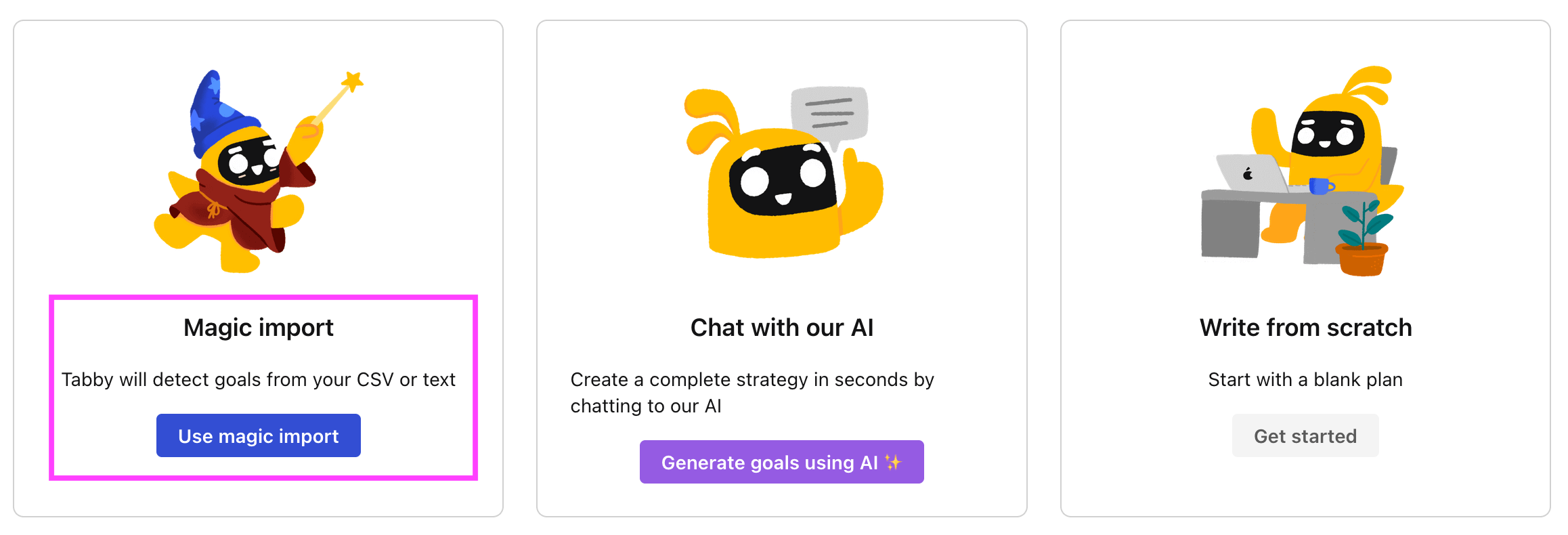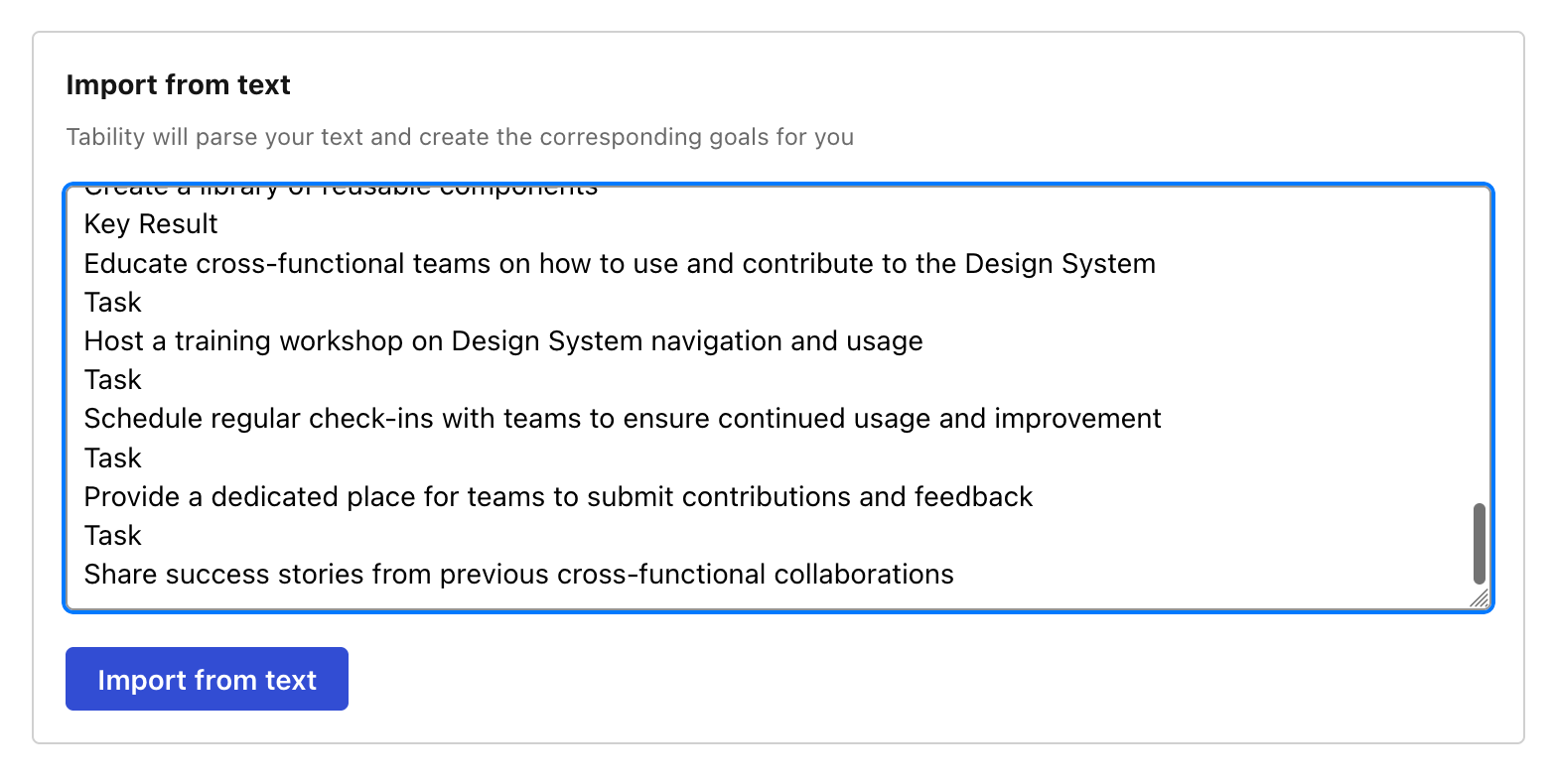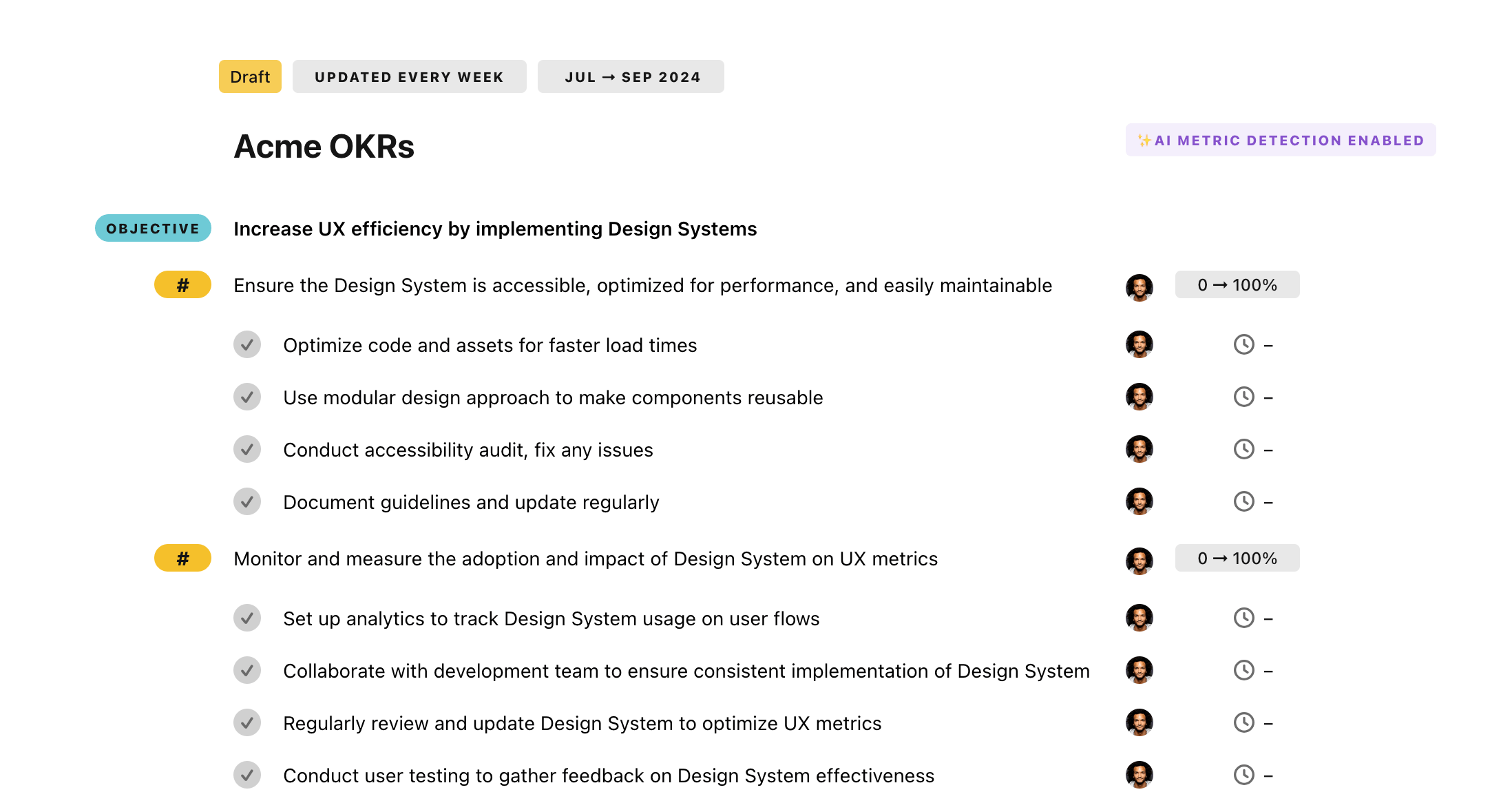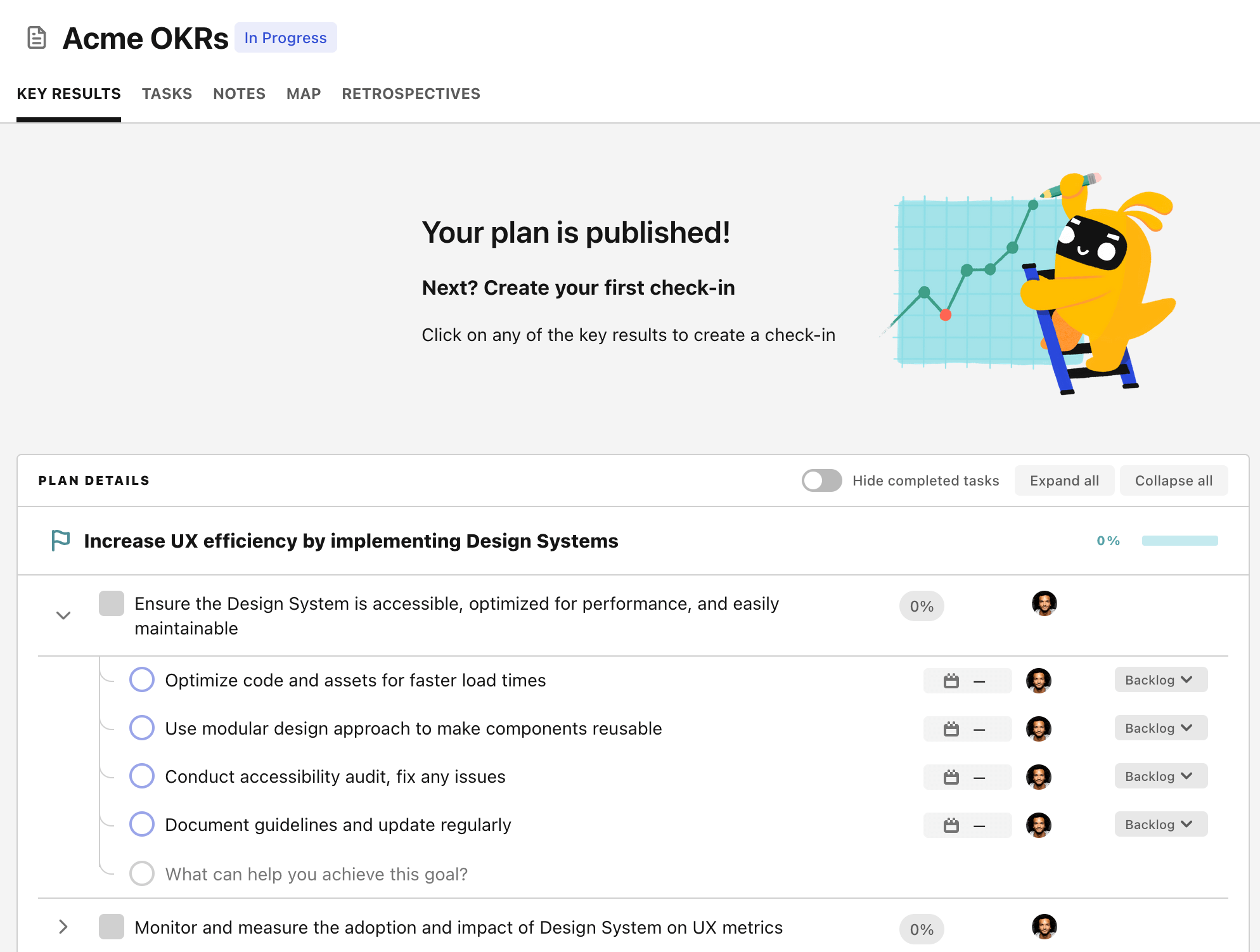OKR template to enhance user satisfaction by 10%
Your OKR template
The second key metric for this OKR is to reduce the average user support response time to under two hours. This aim is to streamline the customer support operations - training the team for faster communication, integrating efficient customer relationship management software, and expanding the team by hiring more dedicated customer support personnel.
The third important criterion is implementing customer feedback into the product design for the next iteration, making the product more user-centric. This entails collecting and categorizing relevant feedback from the customers, incorporating changes in the product's next iteration, and discussing the feedback during product design meetings.
Overall, the OKR focuses on enhanced customer satisfaction, achieved with quicker customer service and user-centric product improvements. This OKR takes a multi-pronged approach to enhance user satisfaction - feedback-driven product improvements, improved customer support, and interactive user surveys.
ObjectiveEnhance user satisfaction by 10%
KRConduct 3 interactive user surveys to identify scope for improvement
Distribute surveys to a diverse user group
Analyze survey results for potential improvements
Design three different user surveys targeting improvement areas
KRAchieve an average user support response time of under 2 hours
Train team on prompt and proactive communication
Implement efficient customer relationship management software
Hire additional dedicated support staff
KRImplement customer feedback in product design by next iteration
Collect and categorize relevant customer feedback on product
Incorporate changes in the next product iteration
Discuss feedback in product design meetings
How to edit and track OKRs with Tability
You'll probably want to edit the examples in this post, and Tability is the perfect tool for it.
Tability is an AI-powered platform that helps teams set better goals, monitor execution, and get help to achieve their objectives faster.
With Tability you can:
- Use AI to draft a complete set of OKRs in seconds
- Connect your OKRs and team goals to your project
- Automate reporting with integrations and built-in dashboard
Instead of having to copy the content of the OKR examples in a doc or spreadsheet, you can use Tability’s magic importer to start using any of the examples in this page.
The import process can be done in seconds, allowing you to edit OKRs directly in a platform that knows how to manage and track goals.
Step 1. Sign up for a free Tability account
Go tohttps://tability.app/signup and create your account (it's free!)
Step 2. Create a plan
Follow the steps after your onboarding to create your first plan, you should get to a page that looks like the picture below.

Step 3. Use the magic importer
Click on Use magic import to open up the Magic Import modal.
Now, go back to the OKR examples, and click on Copy on the example that you’d like to use.

Paste the content in the text import section. Don’t worry about the formatting, Tability’s AI will be able to parse it!

Now, just click on Import from text and let the magic happen.

Once your example is in the plan editor, you will be able to:
- Edit the objectives, key results, and tasks
- Click on the target 0 → 100% to set better target
- Use the tips and the AI to refine your goals
Step 4. Publish your plan
Once you’re done editing, you can publish your plan to switch to the goal-tracking mode.

From there you will have access to all the features that will help you and your team save hours with OKR reporting.
- 10+ built-in dashboards to visualise progress on your goals
- Weekly reminders, data connectors, and smart notifications
- 9 views to map OKRs to strategic projects
- Strategy map to align teams at scale